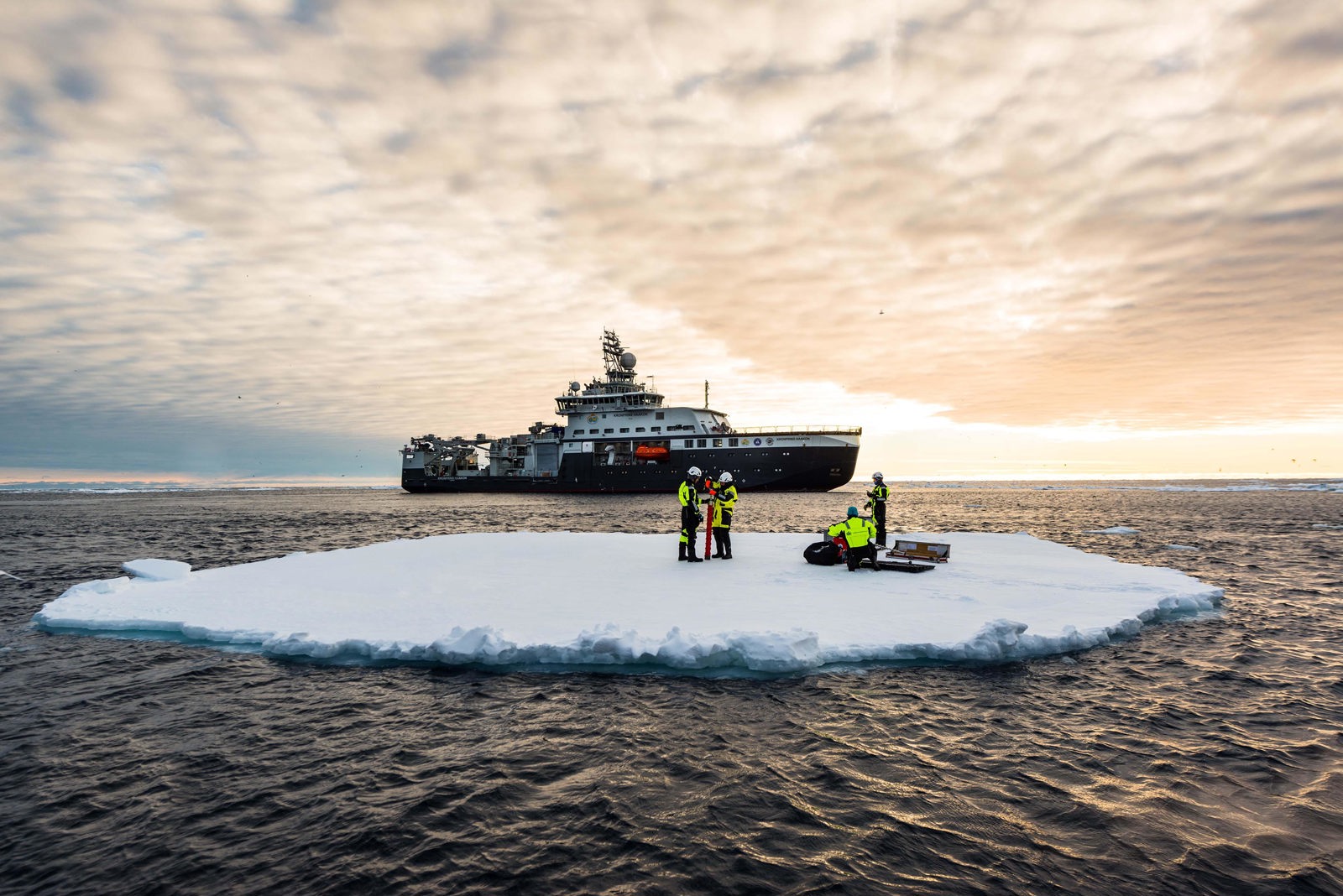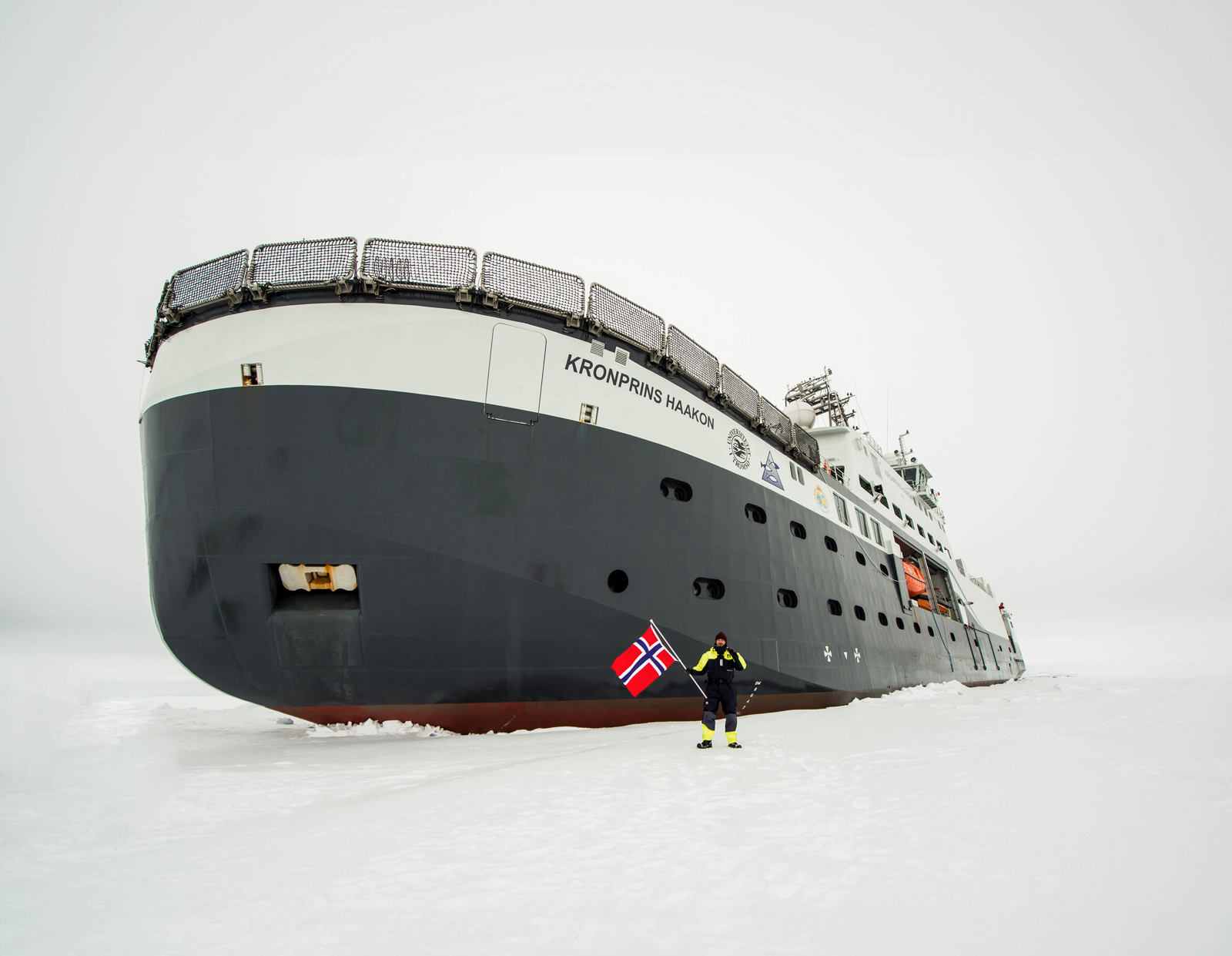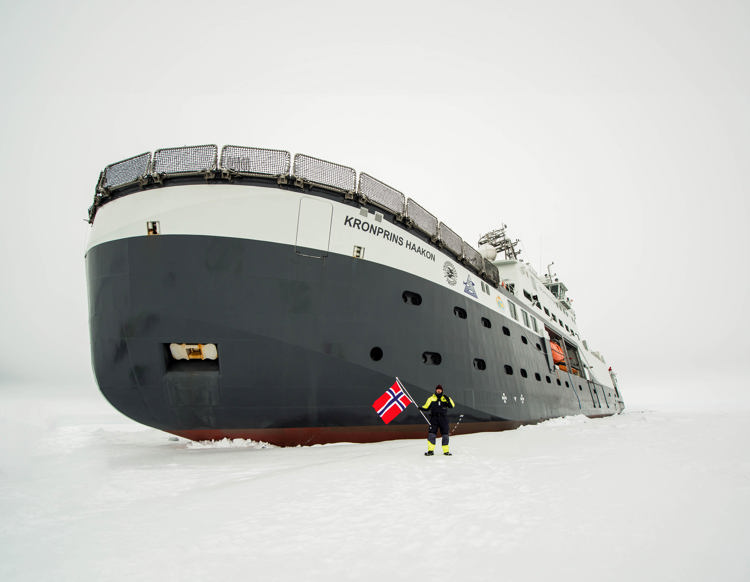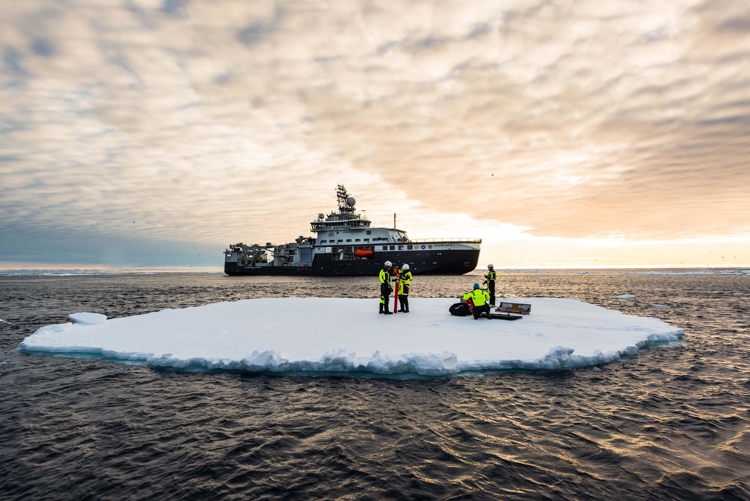
The Sir David Attenborough has been creating waves around the world since its maiden voyage. Developed for the British Antarctic Survey, it’s the latest in a line of polar vessels designed by Kongsberg Maritime, and is an extraordinary showcase for our exceptional expertise.
-
Text:Global Sales and Marketing
Photo:©Kongsberg Maritime | ©Cecilie Hatløy | ©Hurtigruten | ©British Antarctic Survey | ©Andreas Wolden | ©Ted Gatlin | ©Andrea Klaussner
-
Craig TaylorSenior Manager PR & Communications
Senior Ship Designer Erik Leenders explains the challenges and complexities faced when designing such special-purpose ships.
The Sir David Attenborough has attracted worldwide attention for all kinds of reasons – but for Kongsberg Maritime, it’s the expertise she exemplifies that makes her a stand-out ship.
Decades of experience and learning went into her design, which has to withstand extremes of heat and cold and perform at her best in the world’s most hostile waters.
That’s an area in which Kongsberg Maritime excels. “The polar vessels we design include cargo, expedition cruise, offshore, fishing and research vessels,” says Senior Ship Designer for Research Vessels, Erik Leenders.
Erik Leenders admits that there are many challenges in designing polar vessels.
“Of the 1,000 ships we’ve designed, many are still in operation, including three research vessels, two expedition cruise vessels, three polar class and two ice-class platform supply vessels and a number of anchor handling and towing vessels.
“They all have certain factors in common, such as the extreme conditions they’ll be operating in. We have to meet the Polar Code, which means a reinforced hull and propulsion systems, as well as anti-icing on decks and outside equipment.

“We also have to think about comfort for passengers and crew and, for research vessels especially, how operations and operating conditions might impact on research activities.”
Nowhere is the complexity of polar design more evident than in Kongsberg Maritime’s research vessels, the Kronprins Haakon and the Sir David Attenborough.

Designing a research ice-breaker is not an easy task.

Kronprins Haakon was the first Norwegian icebreaker designed for polar research

Built according to Polar Class 3 and meeting the Polar Code.

Nowhere is the complexity of polar design more evident than in Kongsberg Maritime’s research vessels, the Kronprins Haakon.
A new era in ship design

With the design commissioned in 2008, Kronprins Haakon was the first Norwegian icebreaker designed for polar research, and the first purpose-built polar research vessel since Roald Amundsen’s Maud more than 100 years before.
Built according to Polar Class 3 and meeting the Polar Code, the ship is used jointly by the Norwegian Polar Institute, the Institute of Marine Research, and the University of Tromsø, in the Arctic and Antarctic.
“Designing a research ice-breaker is not an easy task,” says Erik. “On the one hand, you need a silent vessel with minimum underwater radiated noise (URN) and bubble-free zones. On the other, you need to be able to break ice.
We learned a lot about how to design the hull and the extra space polar research vessels require”
“As ship designers, we have to balance contradictory requirements and find the optimum balance between efficiency, noise, ice-breaking capability, redundancy, reliability, manoeuvrability, seakeeping, and more.”

The reason the design is so complicated is simply that scientific research, to be effective, must be accurate. Research vessels can’t interfere with measurements, which means controlling underwater noise, exhaust emissions, anything being discharged into the sea, even the way bubbles flow under and around the hull.

Years of expertise have gone into the design of the Sir David Attenborough.
Because scientists need clean samples, design also has to consider how wind flows around the vessel, so it can be designed to avoid the exhaust venting into the measuring equipment. Similarly, if water sampling and intake are on the starboard side, anything being expelled into the water must be on the opposite side.
Lessons learned during the Kronprins Haakon design process were helpful when the time came to consider the design of the Sir David Attenborough. “We learned a lot about how to design the hull and the extra space polar research vessels require,” says Erik.
“However, the Sir David Attenborough had its own requirements too, and these needed slightly different solutions.
“The hull form, for example, is larger than a normal vessel because it has to accommodate so much equipment, because the ship is actually doing the combined roles of the two ships she replaced, the Ernest Shackleton, and the James Clark Ross. These ships were each focussed on supply and research, respectively. At the same time, some polar bases have draught restrictions, so the Sir David’s maximum draught is 7.5 metres, which is lower than a standard ice-breaking vessel. It also has to cope with ice up to one metre thick.
“We paid a lot of attention to the twin skegs to meet underwater noise requirements. And finally, we had to think about keeping bubbles away from the sensors. On a normal research vessel, we use gondolas sticking out from the hull. That’s not possible on an ice going vessel. We designed the bow to make sure bubbles in the water are, as far as possible, directed away from the sensors.”

Comfort is key at sea
Designing to suit the ship’s purpose may be more complex on a research vessel, but it’s an equally important first principle for any ship. On a tug, for example, design will be led by the towing winch, bollard and propulsion configuration. On a cargo vessel, it’s built around where and how the cargo will be stored. On a CSOV (for wind farm support) the primary consideration is the walkway, and safety is of course a key consideration in every case. For polar vessels, which operate in high seas and incredibly challenging conditions, there’s one other thing that needs to be remembered – comfort for passengers and crew in working, recreational and rest environments. Roll reduction tanks to reduce roll to a few degrees, for example, improving safety keeping seasickness at bay. There are also considerations around noise, vibration, ventilation, temperature control, and storage and preparation of provisions. “Comfort is very important,” says Erik. “Scientists and tourists are not necessarily used to being at sea, so we need to consider how to make their environment as comfortable as we can, so they can enjoy the trip and perform their work effectively. “That might include an anti-roll design, large mess areas, built-in lounges with bars, gymnasiums and saunas. Where needed, we’ll create an on-board hospital, and for polar operations these are much more extensive. Cabins are spacious, with their own TVs and bathrooms. It all makes a difference to life on board, especially in the wildest seas on the planet.”
Designing for the future
Insights gained from the Sir David are proving invaluable in the development of designs for future research vessels. Deck layouts, for example, need to be flexible, in order to accommodate different set-ups for geological and biological surveys, and other duties including meteorological and environmental research.
For that reason, decks are being designed with a lot of container sockets and a special bolting matrix, allowing scientists to bolt whatever they need on to the deck. In the new vessels these bolting matrices are also in the laboratories, so science teams can make their inside arrangement any way they want.
Einar Vegsund, Vice President - Ship Design
Visit our website
Decarbonisation by design.


